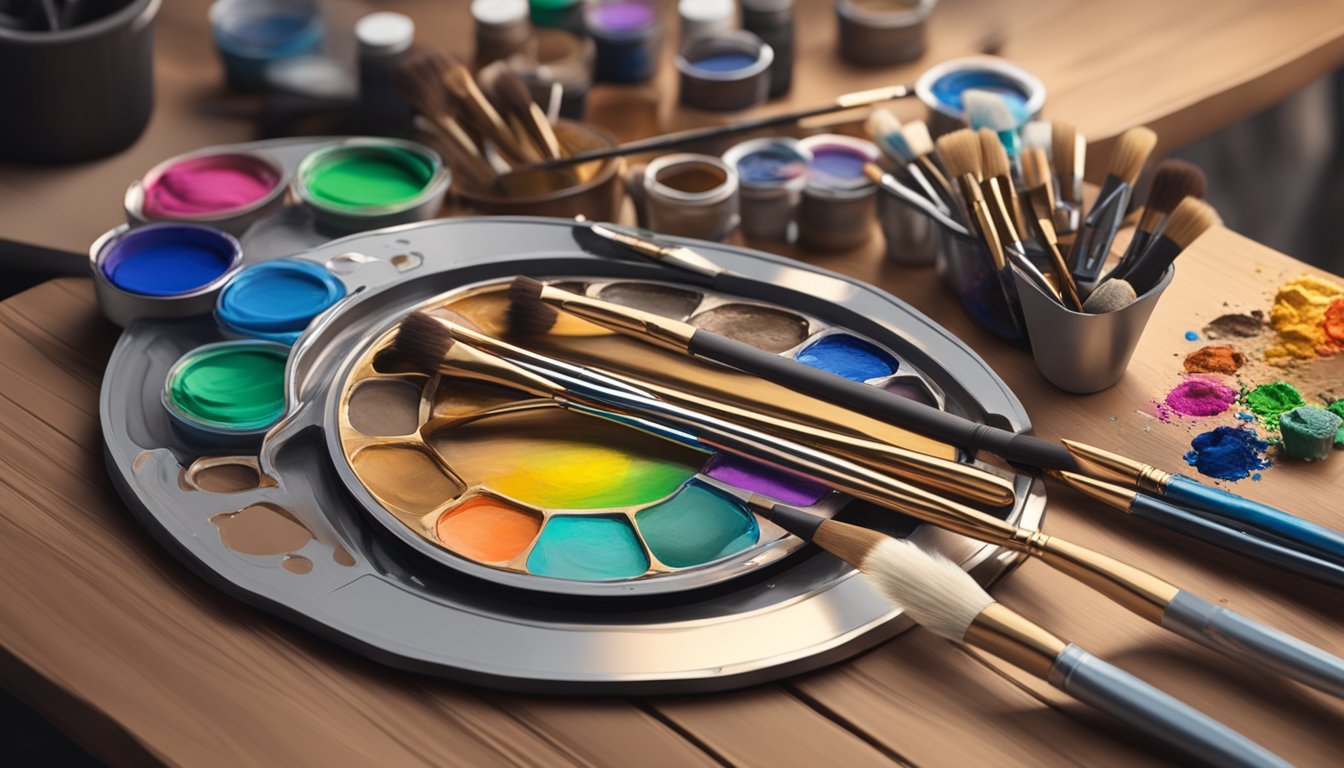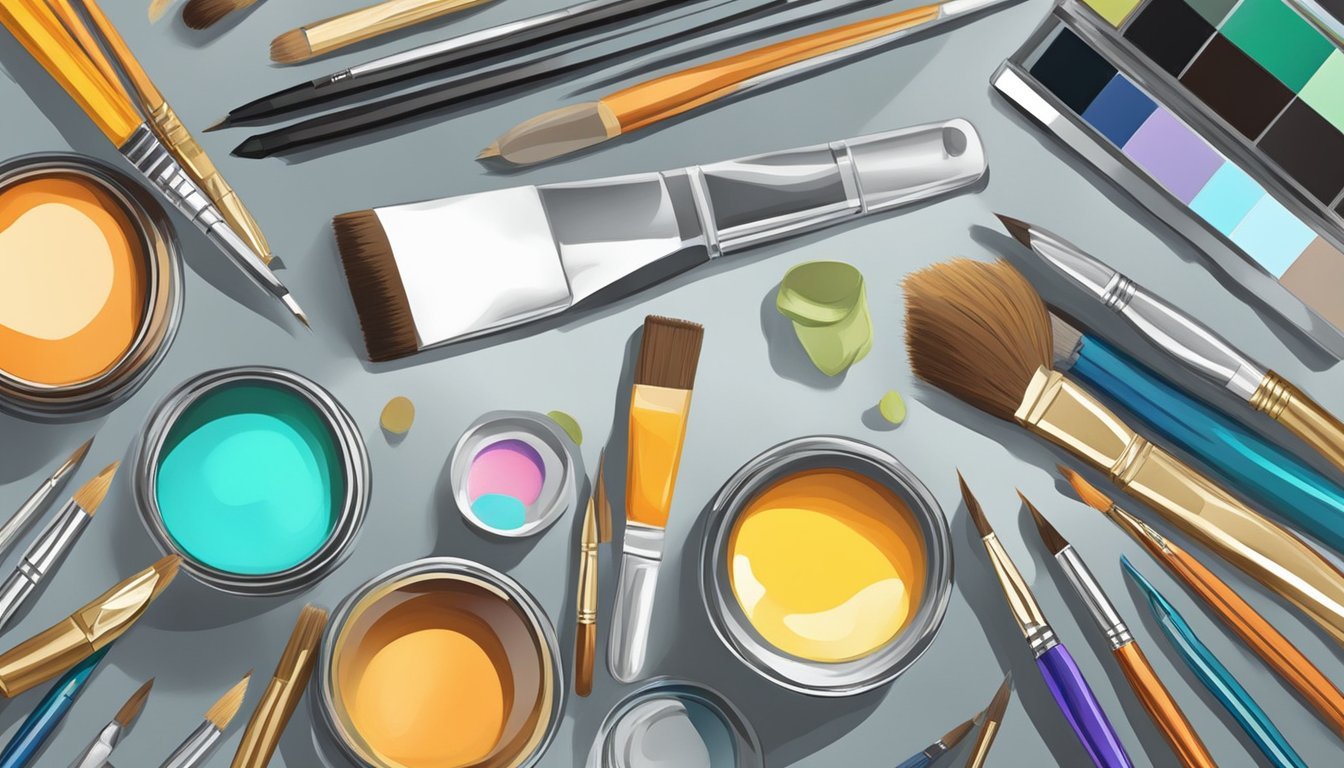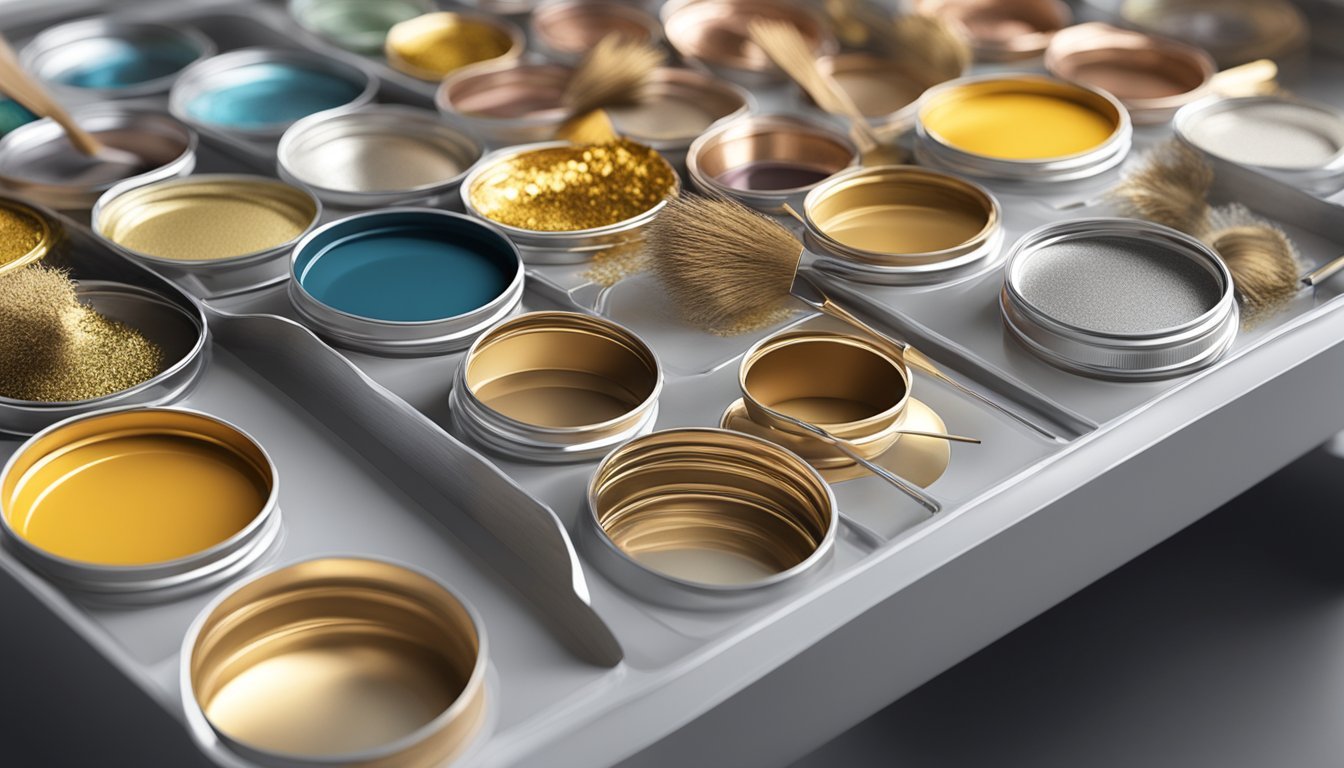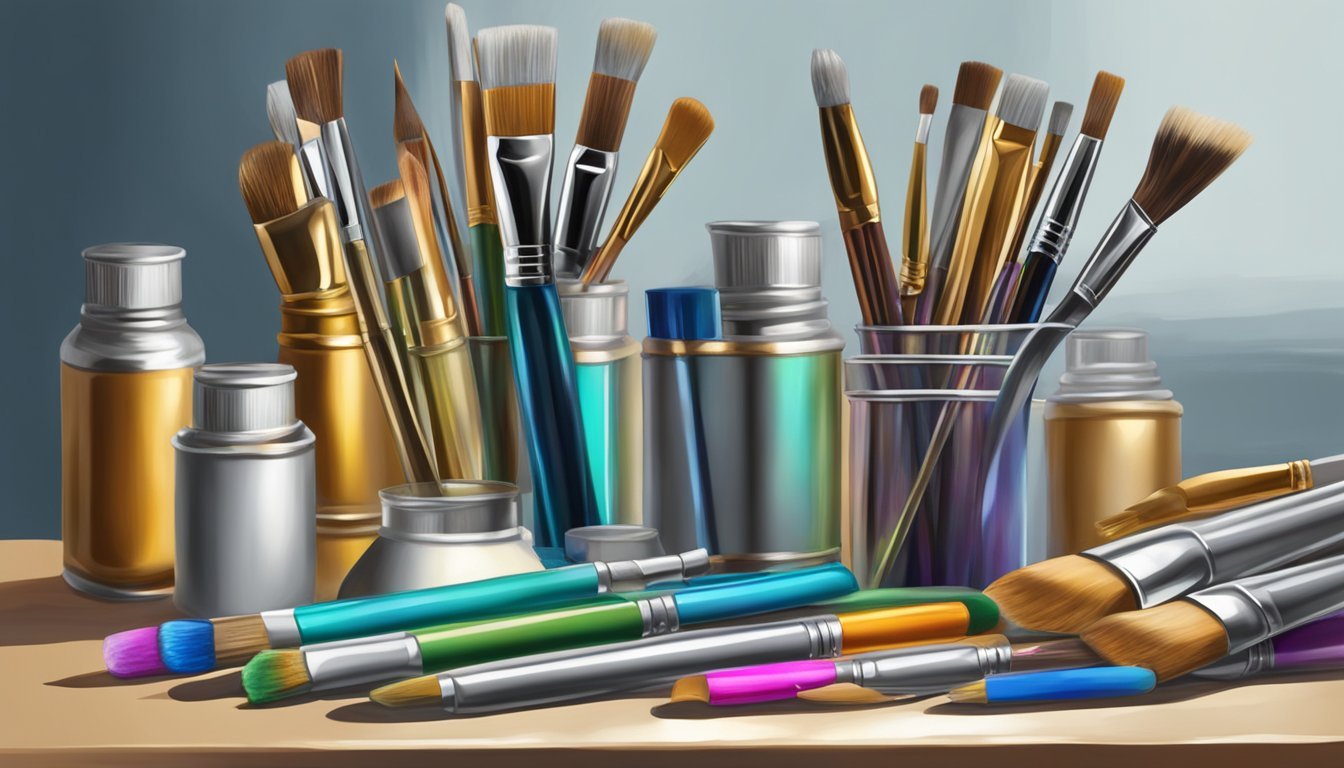Adding metallic accents to your art can completely transform its look and feel.
Incorporating metallic elements into your projects can easily create stunning visual interest and depth.
Whether you’re a seasoned artist or just getting started, these simple touches can elevate your work to new heights.
From paint to leaf and beyond, there are plenty of creative ways to introduce metallics.
This article will explore several techniques that can help you make your art stand out and shine.
Your artwork deserves that extra flair, and metallics are a fantastic way to achieve it.
1) Gold Leaf for Gilding
Gold leaf is a fantastic option for adding a touch of luxury to your artwork.
Gilding with gold leaf can transform a simple piece into something eye-catching and elegant.
To get started, you’ll need to prepare your surface with a special adhesive called size.
Apply it with a paintbrush and let it sit until it’s tacky, similar to sticky notes.
This helps the gold leaf adhere properly.
Once the size is ready, take a sheet of gold leaf and gently place it on the tacky surface.
You can use a soft brush to smooth it out and ensure it sticks well.
Gold leaf can be used on various surfaces, including canvas and wood.
It works well over painted areas to add that metallic shine you’re looking for.
Experiment with different designs, and don’t worry if it doesn’t look perfect.
The charm of gold leaf lies in its unique texture and shimmer.
Enjoy the process and let your creativity shine!
Metallic Watercolor Paints
Metallic watercolor paints can add a stunning touch to your artwork.
These paints provide a lovely shimmer that enhances colors and creates depth.
When using metallic watercolors, choose high-quality brands like Finetec for the best results.
These palettes often feature a variety of dazzling shades that mix seamlessly with water.
To get started, make sure your paper is dry before applying the paint.
Wet paper can cause the metallic paint to bleed, leading to less precise results.
A light touch goes a long way.
You’ll find that metallic watercolors can be quite intense, so use a small amount to achieve your desired effect.
Consider applying the metallic paint over dry areas of your painting to create highlights.
This technique helps the shimmer stand out and adds an interesting focal point.
Experiment with layering metallic watercolors on top of traditional colors.
This can result in striking contrasts and rich textures in your art.
Enjoy the process as you play with different techniques and see what works best for your style.
3) Silver Foil Tape
Silver foil tape is a fantastic way to add a touch of shine to your artwork.
It’s easy to use and can elevate your projects with minimal effort.
Simply peel off a strip of the tape and apply it directly onto your canvas or paper.
You can create clean lines or shapes, giving your art a modern look.
Another great technique is layering the tape to achieve depth.
Try overlapping different pieces to create unique textures and patterns.
This tape adheres well, so you don’t have to worry about it peeling off after application.
It’s also versatile; you can use it on various surfaces like wood, glass, or fabric.
For those looking to get creative, consider using the tape as a border or frame around your art.
It adds definition and a polished finish to your pieces.
Experimenting with silver foil tape can lead to exciting results.
It’s an accessible option for both beginners and seasoned artists looking to enhance their work with metallic flair.
Copper Leafing Pen
Using a copper leafing pen can elevate your art projects with a touch of elegance.
These pens provide an easy way to apply metallic accents without the mess of traditional leafing techniques.
With a copper leafing pen, you can create smooth lines and intricate designs on various surfaces.
Whether you’re working on paper, wood, or canvas, the pen delivers consistent coverage that shines.
To use the pen, simply shake it to mix the contents, then press the tip to start the flow.
You’ll find it easy to control, allowing you to fill in fine details or create larger areas of copper.
These pens are great for adding highlights or borders to your artwork.
Try using them in scrapbooking or card-making for a polished look.
Experiment with layering your designs for added depth.
The glossy finish of the copper provides a striking contrast against more muted colors, making your art pop.
5) Bronze Acrylic Paint

Bronze acrylic paint is a great option for adding a rich, metallic touch to your art.
It offers depth and warmth, making your projects stand out.
You can use bronze paint on various surfaces, like canvas, wood, or fabric.
Its versatility means you can integrate it into your paintings, crafts, or home decor.
Consider applying bronze paint in layers.
Start with a base color, then add bronze highlights for a dynamic look.
You can also mix it with other colors for unique tones.
For application, using a palette knife or a brush can create different textures.
Don’t forget to prepare your workspace, as metallic paints tend to show imperfections.
If you’re looking for a shimmering effect, you might explore products like Schmincke Aqua Bronzes.
They offer highly iridescent options that can amplify your designs even further.
Understanding Metallic Accents

Metallic accents can instantly elevate your art by adding depth, shine, and visual interest.
These elements not only enhance the aesthetic appeal but also enable you to express your style in unique ways.
Let’s break down what metallic accents are and explore the various types of finishes you can consider.
What Are Metallic Accents?
Metallic accents refer to decorative elements in art that feature metallic materials or finishes.
These can include anything from gold and silver leaf to painted metallic surfaces.
They bring a reflective quality that captures light and draws attention.
Using metallic accents in your art can transform a simple piece into a bold statement.
These accents can serve various purposes, such as enhancing particular features or creating a focal point.
They blend well with different textures and styles, making them a versatile choice for any artistic endeavor.
Types Of Metallic Finishes
There are several types of metallic finishes that you can incorporate into your art.
Here’s a quick look:
-
Glossy: A high-shine finish that bounces light, creating a vibrant and luxurious look. Great for contemporary styles.
-
Matte: Offers a subtle, refined appearance. This finish works well when you want a more understated metallic effect.
-
Satin: Falls between glossy and matte, providing a soft sheen that adds dimension without overwhelming the piece.
-
Brushed: Features a textured look achieved by brushing the surface, giving it a unique, tactile quality.
-
Hammered: This finish mimics an uneven texture, offering a rugged, artisanal appearance that adds character to your art.
By selecting the right finish, you can tailor the impact of metallic accents to fit your vision perfectly.
Choosing The Right Metallic Elements

When it comes to integrating metallic accents into your art, selecting the right elements is crucial.
You’ll want to consider the impact of gold versus silver and how to mix different metals effectively.
Gold Vs. Silver Accents
Gold accents bring warmth and a sense of luxury to your art.
They work exceptionally well with rich colors like deep blues, emerald greens, and burgundies.
Gold tends to stand out, making it ideal for statement pieces or focal points in your space.
On the other hand, silver accents offer a cooler, more modern feel.
Silver complements lighter shades and can enhance breezy, minimalist vibes, especially in spaces with a lot of natural light.
Tips for choosing:
- Consider your existing color palette.
- Think about the mood you want to create.
If you aim for elegance, lean towards gold.
For a contemporary or understated look, silver may be your best bet.
Mixing Different Metals
Mixing metals can add depth and visual interest to your art, but you need to make sure you strike a balance.
Use one metal as the primary, and it should account for about 60-75% of the metallic elements in your decor.
This keeps the look cohesive.
Pro tips:
- Pair warm metals like gold with earthy tones or wooden elements.
- Combine cool metals, like silver or chrome, with shades of gray or white.
Creating a dynamic blend of metals means finding harmony.
Avoid equal splits between different metals to maintain a streamlined appearance.
Instead, explore how each metal interacts with various textures and materials in your space for a unique and stylish look.


